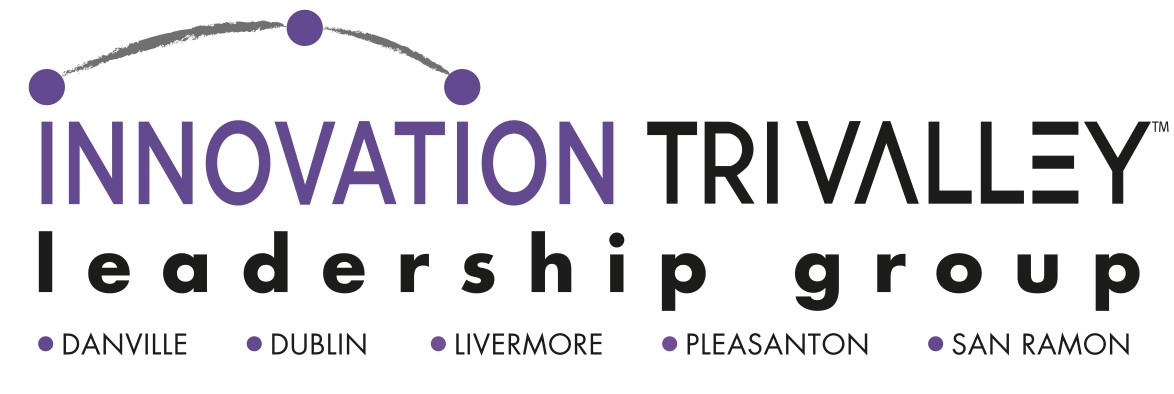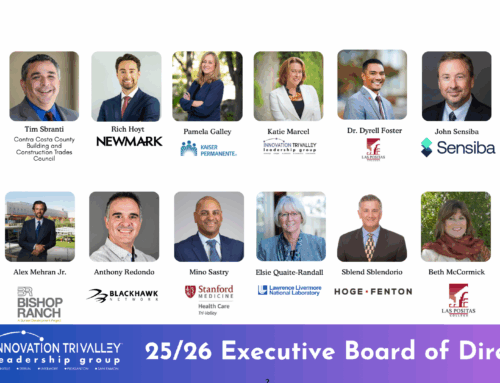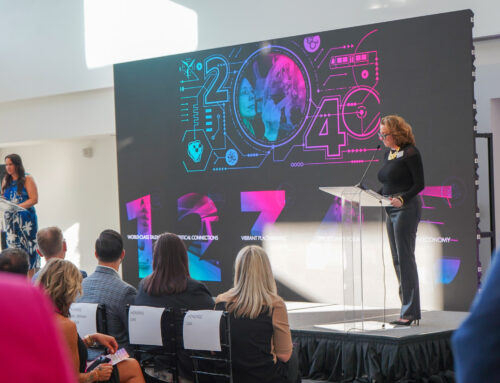LLNL’s Jennifer Pett-Ridge. Photo by Advance Creative.
PUBLISHED IN THE INDEPENDENT 11.14.24
By David Jen
Composed of 44 business leaders, nonprofit leaders, elected officials and local government employees, the survey’s respondents counted the area’s economic and academic environment, as well as its geographical location, as its main strengths.
“The employers that we spoke to were very positive about the Tri-Valley’s position, geographically being between the Bay Area and the Central Valley (and) having access to a highly educated, well-trained workforce that’s working in some of the foremost institutions in the country on these issues,” said FM3 principal researcher Dave Metz at the Decarbonizing Our Economy conference in Livermore on Nov. 8.
But costs, complex regulations and a lack of public understanding remain as barriers to developing technology, continued Metz. A shortage of skilled labor ready for these new industries also worried respondents.
Sponsored by Innovation Tri Valley, the Livermore Lab Foundation, the Lawrence Livermore National Laboratory (LLNL), Startup Tri-Valley and the Chabot-Las Positas Community College District, the conference brought science and technology leaders together to share views on where the Tri-Valley sits as climate-focused industries develop.
Although the term green technology broadly includes any technology that is environmentally friendly or promises to help achieve climate goals, last week’s panelists focused mainly on carbon removal in the context of reaching the country’s goal of zero carbon by 2050. California has a goal of achieving net-zero carbon dioxide emissions by 2045.
“The reality is we know it’s going to be tough to get to zero,” said Jennifer Pett-Ridge, a senior staff scientist at LLNL, spelling out the need for carbon removal. “Not everybody’s going to buy an EV. Not every industry is going to have a technological solution to transform, and we have agriculture and other industries that are just going to continue to produce greenhouse gasses.”
Pett-Ridge is the lead author of Roads to Removal, a 2023 report that outlines a path for the United States to reach net-zero. According to the report, the country must ramp up its carbon-removal rate to 1 billion metric tons of atmospheric carbon dioxide per year by 2050.
But that is not an unachievable goal. If the country were limited to present-day technologies, such a feat would cost roughly $130 billion annually in 2050, or about 0.5% of the current gross domestic product.
“It’s far less than what we’re starting to pay in cleanup costs of hurricanes and other climate disasters; it’s far less than the amount that we’re spending on health and asthma issues that are caused by the air pollution from fossil fuels,” said Pett-Ridge. “What else can you buy for $130 a ton? This is a pretty good deal.”
To attract green-technology jobs to the Tri-Valley, panelists said any obstacle that inhibits a company’s speed will likely cause it to look elsewhere when establishing a business.
“Everything’s about time for a startup,” said Matin Hanifzadeh, founder of Livermore-based carbon-capture startup Rushnu, during the conference. “We are running to develop a technology, do R&D, do a scale out, do sales, and it’s all by a small team. At the same time, you’re trying to manage a runway. So, being able to bring this technology to market as soon as possible, find the right customers, find the right investors — these are all of the challenges that I think (are) not only for Rushnu, but for any climate startup.”
Rushnu, a member of Livermore startup incubator Daybreak Labs, is developing a catalyst-based system that captures and mineralizes flue-gas (carbon from smokestack emissions) in a single step. After being installed on existing emissions sources, the captured carbon can then be converted into profitable byproducts, like biofuel and biodiesel.
According to the Roads to Removal report, direct air capture (DAC) systems and biomass carbon removal and storage (BiCRS), although still in their nascent stages, will likely serve as the primary means to remove carbon as we approach 2050.
BiCRS leverages the natural processes of plants that first convert atmospheric carbon dioxide into biomass — plant parts, such as roots, stems and leaves. When that organic matter dies, instead of releasing carbon dioxide into the atmosphere through the natural decaying process, the biomass is collected and processed to capture and store the carbon in an industrial compound that could later be used for other industrial purposes or for long-term storage. DAC systems use chemical reactions with the outside air to turn atmospheric carbon dioxide into forms, such as minerals, that can be easily transported and stored.
Local groups, such as Innovation Tri Valley and the Livermore Lab Foundation, are working to make the Tri-Valley an encouraging business ecosystem for companies such as Rushnu.
“We really want to be, as I say, a catalyst, a resource for the community,” said Pett-Ridge. “We want to bring our help where you need it.”






